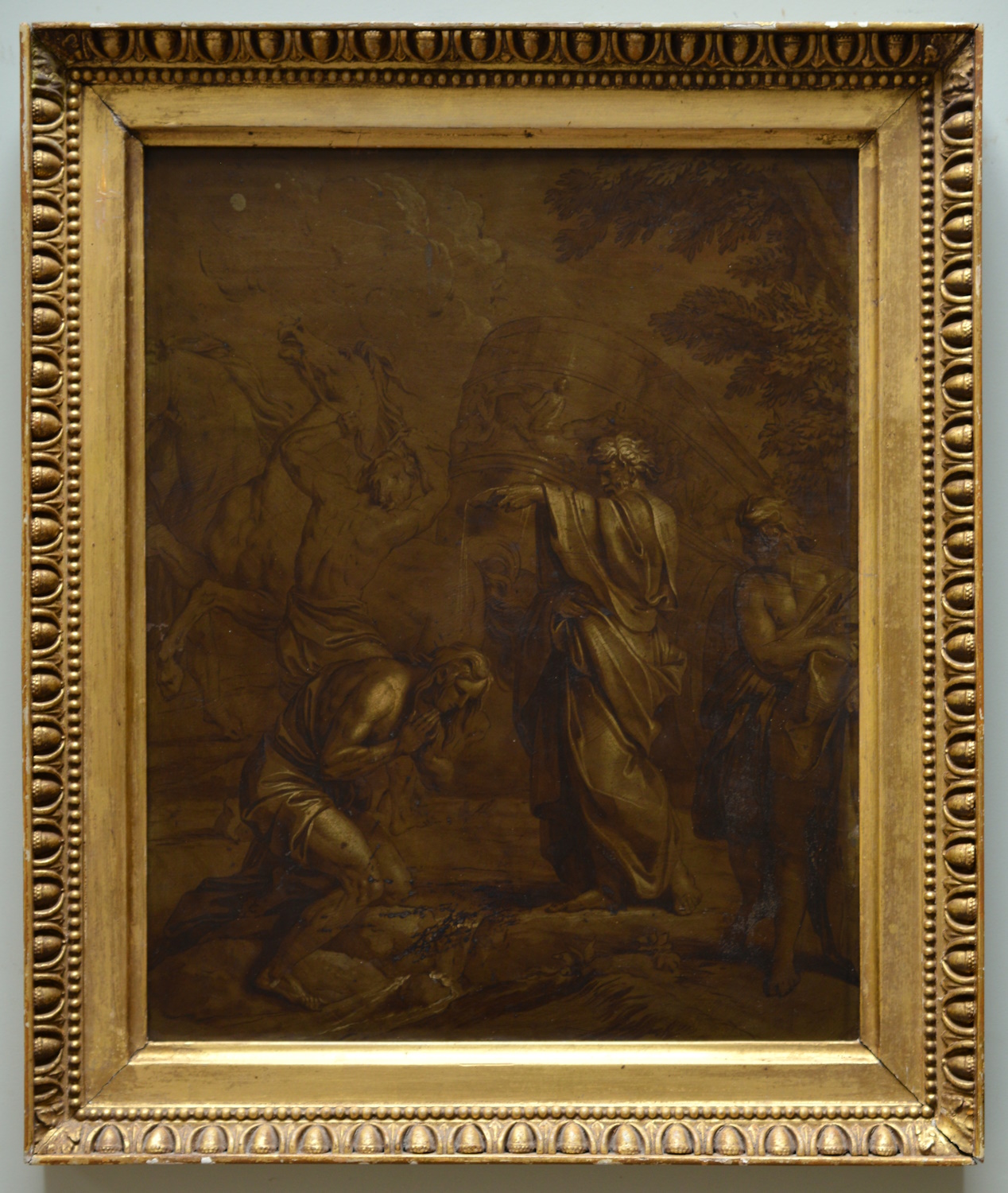Chéron, Louis (1655–1725)
Louis Chéron was born in Paris on 2 September 1655 (Auguste, 379) into a notable French protestant family of artists, the son of Henri Chéron (d. 1677), a miniature painter and an engraver, and the younger brother of Elizabeth-Sophie Chéron (1648–1711), also a painter and engraver. After being taught first by his father, he studied at the Académie Royale de Peinture et de Sculpture, where he won the prix de Rome twice, in 1676 and 1678; on the first occasion he received financial help from his sister to visit Italy, where, as his many surviving drawings show, he particularly studied works by Raphael and Giulio Romano. Back in Paris he received several commissions, notably in 1687 and 1690 from the Guild of Goldsmiths for paintings to be presented in May of those years to the cathedral of Notre Dame in Paris. Studies for the 1687 painting, The Prophecy of Habbakuk (Musée du Louvre), survive; it was later engraved by Nicolas-Henri Tardieu. It was also at this time that Chéron produced a series of decorative paintings on classical and biblical themes for the drawing-room of his sister’s house in Paris.
Soon after, Chéron decided to leave France, no doubt spurred by the persecution of Huguenots following the revocation of the edict of Nantes in 1685. He is recorded in the registers of the Huguenot congregation at the Savoy Chapel in London in 1693 and was naturalized in 1710. His going to London was possibly at the suggestion of Ralph, first earl and later duke of Montague, for whom in 1695 in the recently completed Boughton House, Northamptonshire, he painted several ceilings, including those of the saloon and the staircase, with mythological scenes, showing the clear influence of Charles Le Brun; an album in the British Museum contains six drawings for these by Chéron. He also worked in London at Montague House (1706–12), at Ditton Park, Buckinghamshire, at Burghley House, Northamptonshire, and in the gallery and little dining-room at Chatsworth House, Derbyshire. In 1709 he was one of five artists invited to submit designs for the dome of St Paul’s Cathedral. But his work was not of especially high quality, and it was later criticized by both George Vertue and Horace Walpole. In 1694 he had produced a series of plates for an edition of the Psalms, published by his sister, and he now turned increasingly to book illustration. Most notably he produced a set of designs, in collaboration with Sir James Thornhill, for the Oxford Baskett Bible (1717) and, also with Thornhill, a set for the elegant edition of Milton’s works published in London in 1720 by Jacob Tonson.
Chéron was also an important drawing teacher, first at the private school established in 1711 by Sir Godfrey Kneller at his house on Great Queen Street and then—when Kneller’s academy split into two groups in 1718—at the St Martin’s Lane Academy, of which, together with John Vanderbank, he was a founder. At this later academy particular emphasis was placed on life drawing, a female model being introduced for the first time in 1722. On 26 May 1725 Chéron died, unmarried, from an attack of apoplexy, and three days later he was buried at St Paul’s, Covent Garden. Several engravings by him after his original designs survive, as do many published from his paintings by other artists, most notably two on historical subjects, The Marriage of Charles Ist and Henrietta Maria, engraved by Nicolas Charles Dupuis, and The Coronation of George Ist, by Claude Dubosc. From Vertue we know of two posthumous sales of pictures and drawings left by Chéron in his studio, in 1726 and in 1740. The earlier sale was of eighty-three paintings and no fewer than 161 drawings, some of which were bought by James Stanley, tenth earl of Derby, from whose heir the majority passed to the British Museum in 1953.
Showing the single result
